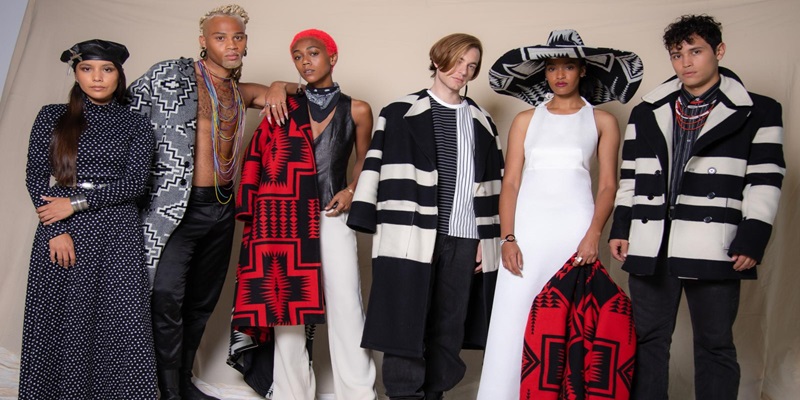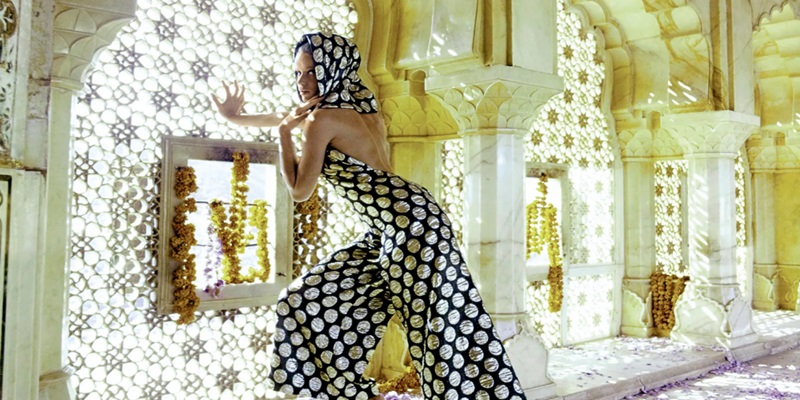In the contemporary sartorial zeitgeist, there has been a conspicuous recrudescence in the reverence for regional fashion craftsmanship. This renaissance transcends facile nostalgia, symbolic of an almost sacerdotal veneration for the artisanal competencies and atavistic traditions assiduously safeguarded across generations. Regional fashion craftsmanship has metamorphosed into an inexhaustible reservoir of inspiration for couturiers aspiring to amalgamate ancestral heritage with the difficulties of modern-day aesthetics.

The infusion of traditional textiles in fashion has been pivotal in this cultural recrudescence. Designers increasingly gravitate towards these textiles to engineer sartorial creations that are not merely aesthetically distinctive but also imbued with cultural gravitas. Traditional textiles in fashion are far more than mere sartorial substrates; they are exegetical vessels, each intricately woven strand narrating the saga of a specific region or ethnic enclave. This intrinsic semiotic quality renders these textiles invaluable within the current couture discourse.
Traditional textiles in fashion frequently manifest intricate iconography and motifs endemic to particular geocultural loci.
The materials employed are typically endemic, which imparts an element of ecocentric sustainability to the fashion domain.
Traditional textiles in fashion are predominantly handcrafted, ensuring the irreproducible singularity of each creation.
Handmade fashion trends represent another cardinal component that has profoundly recalibrated the contemporary fashion paradigm. These trends underscore the meticulous craftsmanship and human labour invested in each vestment, accentuating human agency's intrinsic value within a domain frequently monopolized by mechanized, large-scale production. Handmade fashion trends transcend rudimentary aesthetic concerns, emblematic of an ethical and eco-conscious ethos that resonates with consumers increasingly aware of the repercussions of their sartorial predilections.

The synthesis of handmade fashion trends with modern couture has culminated in creating garments that are not merely superior in quality but also ostentatiously distinctive within an oversaturated market. Designers ingeniously integrate time-honoured artisanal techniques into contemporary sartorial frameworks, engendering a synthesis that resonates with a heterogeneous demographic.
Handmade fashion trends act as custodians for local artisans and contribute to the perpetuation of traditional crafts.
These trends champion sustainability by prioritizing intrinsic quality over extrinsic quantity.
Handmade fashion trends galvanize creativity and avant-garde innovation within the fashion industry.
The cultural resonance of regional fashion craftsmanship is both profound and ineffable. This craftsmanship stands as a living testament to the historico-cultural identity of a region. By weaving regional fashion craftsmanship into the fabric of contemporary fashion, designers are not merely preserving these traditions but renewing them within a modern framework. This confluence of antiquity and modernity engenders a dynamic fashion landscape that reveres the past while simultaneously embracing the future.
Safeguarding regional fashion craftsmanship is imperative for preserving cultural heterogeneity within the fashion ecosystem. These artisanal crafts are often imperilled by the relentless march of industrialization and the concomitant erosion of traditional practices. Nonetheless, the burgeoning interest in regional fashion craftsmanship offers a glimmer of hope for their preservation. By incorporating these crafts into modern fashion, designers can ensure their perpetuation and relevance across successive generations.
Traditional textiles in fashion occupy a vanguard position within the discourse on sustainability in the fashion industry. The production of these textiles typically involves environmentally benign processes, such as natural dyeing and hand-weaving, which mitigate the ecological footprint of garment manufacturing. Traditional textiles in fashion are integral to the slow fashion movement, which advocates for a more deliberate, ethical approach to clothing consumption.
Traditional textiles in fashion often incorporate natural fibres, which are biodegradable and eco-compatible.
The production methodologies for these textiles generally utilize low-impact techniques that conserve environmental resources.
Traditional textiles in fashion propagate the ethos of purchasing less but investing in superior, enduring garments.
As we gaze towards the horizon, handmade fashion trends are poised to remain formidable in the fashion industry. As consumers become more observant regarding the provenance and impact of their apparel, the demand for handmade, ethically produced garments is anticipated to burgeon. Handmade fashion trends will undoubtedly be instrumental in steering the fashion industry towards a more sustainable, responsible trajectory.
The confluence of cutting-edge technologies with time-honoured methods to conceive avant-garde designs.
Collaborations between global designers and indigenous artisans to amplify the visibility of handmade fashion trends.
The exploration and cultivation of new markets for handmade fashion trends, particularly in regions where these artisanal crafts have yet to receive widespread recognition.
Regional fashion craftsmanship has witnessed a profound renaissance in localized enclaves and on an expansive global scale. This craftsmanship is increasingly exalted as an invaluable commodification in a milieu where consumers are insatiably yearning for honesty and inimitability. The globalization of regional fashion craftsmanship promulgates diverse artisanal traditions to a cosmopolitan audience, thereby augmenting the breadth of markets for these sui generis creations.
Regional fashion craftsmanship precipitates a substantive contribution to local economies, engendering occupational proliferation and sustaining heritage industries.
The burgeoning global exigency for regional fashion craftsmanship has engendered a multiplicity of equitable trade practices, ensuring artisans receive a commensurate recompense for their intricate labour.
Regional fashion craftsmanship engenders entrepreneurial ascendancy, particularly among women in rural locales, who can leverage their indigenous skills to attain economic sovereignty.
Traditional textiles in fashion are not mere relics of antiquity but catalysts for avant-garde innovation within the fashion industry. While deeply entrenched in venerable traditions, these textiles are reconceptualized in contemporary designs that transcend conventional boundaries. Traditional textiles in fashion have evolved into the substratum for avant-garde creations that amalgamate antiquity with modernity in unprecedented and audacious ways.
Designers are synergizing traditional textiles in fashion with contemporary materials, such as advanced synthetics, to fabricate hybrid fabrics that proffer aesthetic allure and practical functionality.
The digital transmutation of conventional textiles in fashion has facilitated the preservation and replication of intricate motifs through avant-garde technologies like 3D printing and laser ablation.
Traditional textiles in fashion are galvanizing new forms of eco-conscious design, with couturiers experimenting with zero-waste methodologies and upcycling to manifest sustainable, innovative garments.
In summation, the influence of regional fashion craftsmanship, traditional textiles in fashion, and handmade fashion trends on contemporary couture is both profound and multifaceted. These elements imbue the industry with a richness and depth that transcends visual appeal. By embracing regional fashion craftsmanship and harmonizing traditional textiles in fashion with handmade fashion trends, the fashion industry can create garments that are not only aesthetically compelling but also culturally resonant and ecologically sustainable.